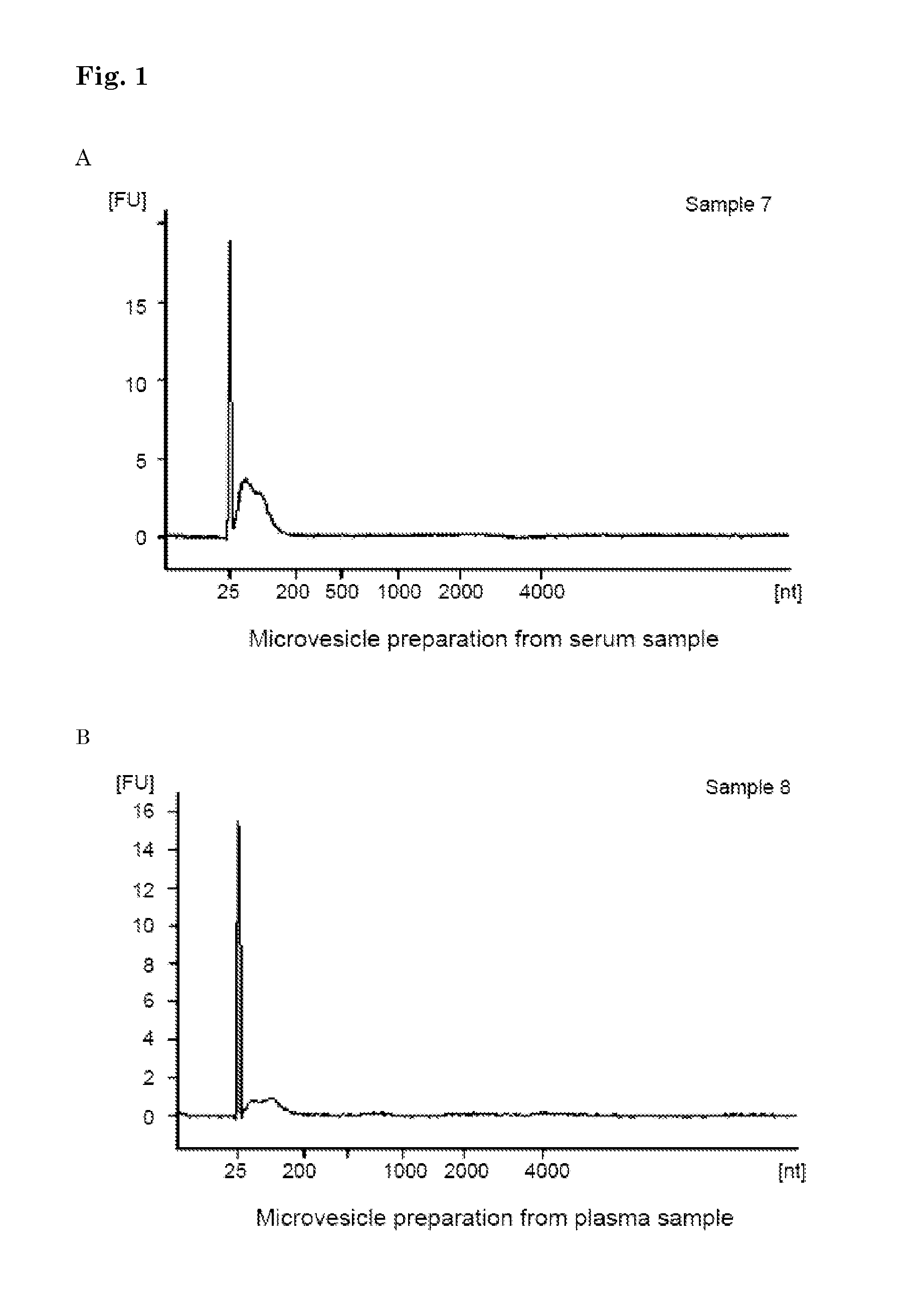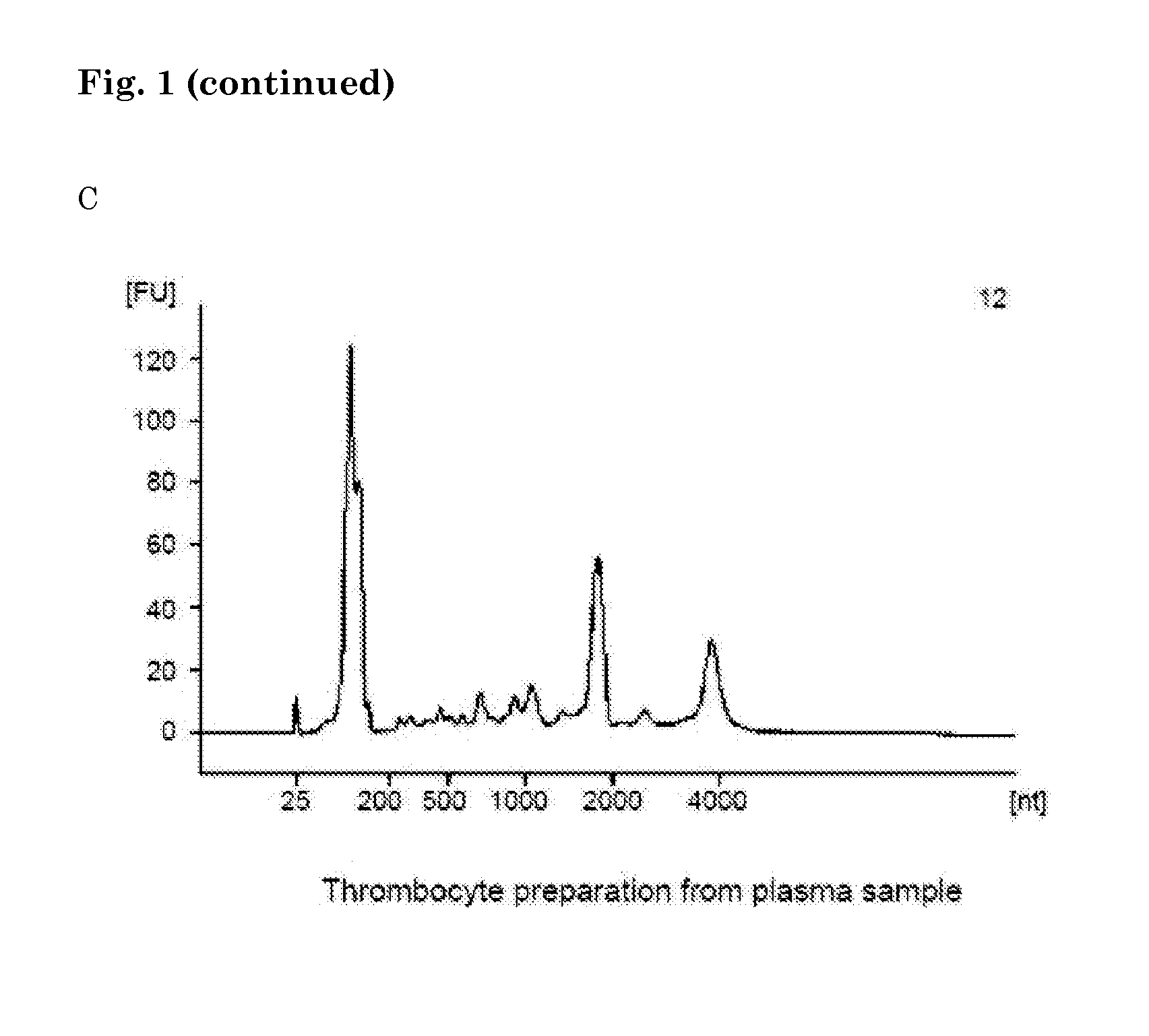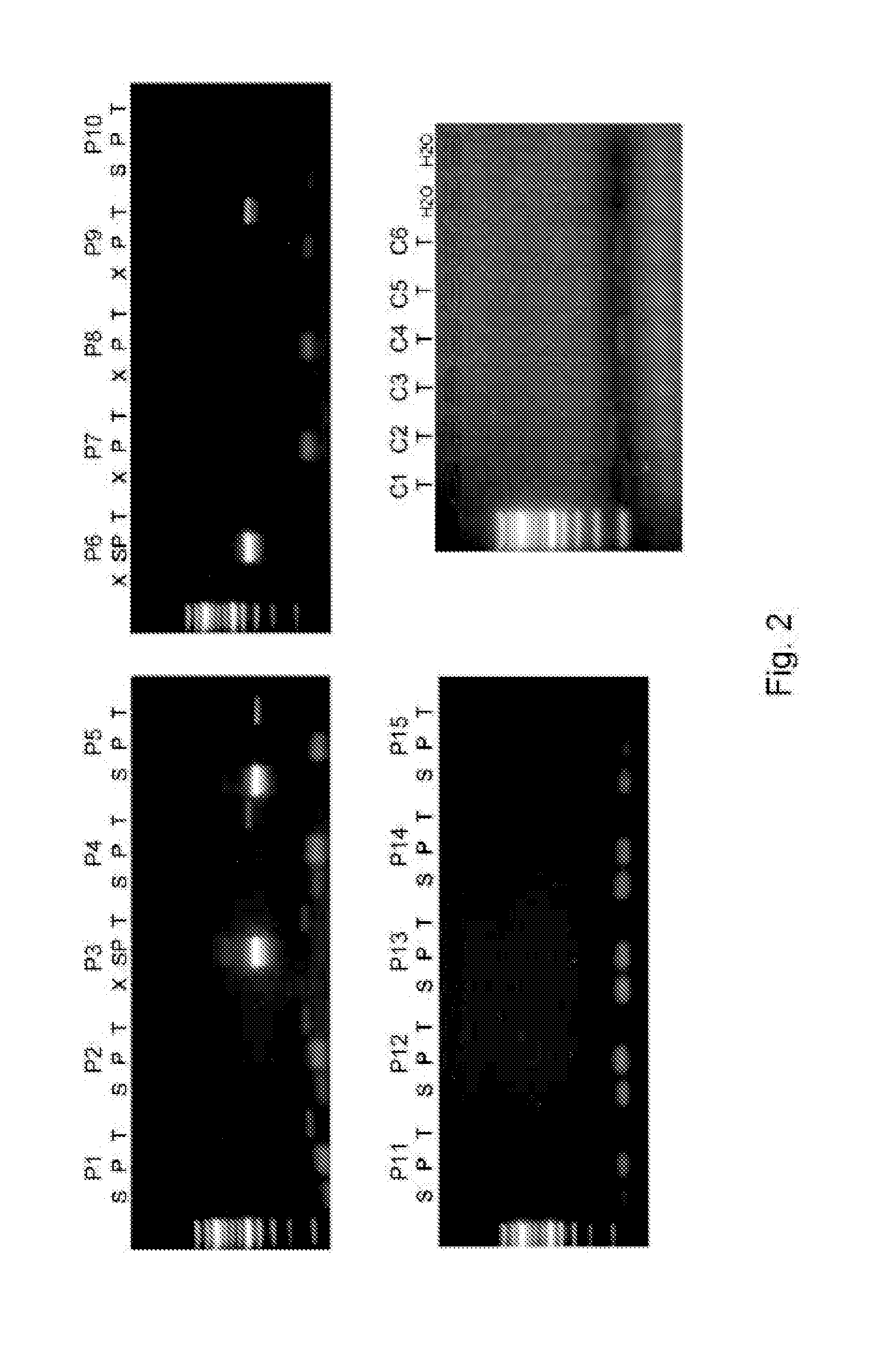Method of analysing a blood sample of a subject for the presence of a disease marker
a blood sample and disease marker technology, applied in the field of medical diagnostics, can solve the problems of cancer being detected too late, disease is difficult to diagnose and even harder to treat, and cancer remains a major cause of death worldwid
- Summary
- Abstract
- Description
- Claims
- Application Information
AI Technical Summary
Benefits of technology
Problems solved by technology
Method used
Image
Examples
example 1
[0143]Thrombocytes were isolated from blood samples of 4 glioblastoma patients and 4 healthy donors by centrifugation steps. The thrombocytes were then subjected to RNA extraction using Trizol RNA isolation. The purified thrombocytic RNA samples were then converted to cDNA and analyzed by Agilent 4×44K expression microarrays using standard microarray protocols. This allowed the profiling of the mRNAs in the different thrombocyte preparations.
[0144]About 8500 RNA transcripts could not be detected by expression microarrays in platelets from healthy donors. These transcripts were present at levels below the detection limit of the Agilent 4×44K chip in thrombocytes from healthy donors. Hence, such RNAs may all be potential biomarkers for cancer diagnostics. Of the RNAs not detected by expression microarrays in thrombocytes from healthy donors, a substantial set of RNAs was detected in thrombocytes from glioblastoma patients. Table 1 summarizes unique thrombocytic RNA transcripts detecte...
example 2
Introduction
[0145]Diagnostic platforms which are highly predictive for diagnosing, monitoring, and stratifying cancer patients are key instruments in the development of personalized medicine. In this Example, it is demonstrated that tumor cells transfer (mutant) RNA into blood platelets in vitro, and it is shown that blood platelets isolated from glioblastoma and prostate cancer patients contain the cancer-associated RNA biomarkers EGFRvIII, and PCA3 and PSA, respectively. Moreover, gene expression arrays revealed a distinct mRNA signature in platelets from glioma patients as compared to normal control subjects. Because platelets are easily accessible and isolated, they may form an attractive platform for the companion diagnostics of cancer.
Methods
Platelet Isolation and Tissue Resection.
[0146]Platelets were isolated from whole blood collected in purple-cap BD Vacutainers containing EDTA anti-coagulant by standard centrifugation, and quality (activation and aggregation) as well as pu...
PUM
| Property | Measurement | Unit |
|---|---|---|
| Tm | aaaaa | aaaaa |
| temperature | aaaaa | aaaaa |
| temperature | aaaaa | aaaaa |
Abstract
Description
Claims
Application Information
 Login to view more
Login to view more - R&D Engineer
- R&D Manager
- IP Professional
- Industry Leading Data Capabilities
- Powerful AI technology
- Patent DNA Extraction
Browse by: Latest US Patents, China's latest patents, Technical Efficacy Thesaurus, Application Domain, Technology Topic.
© 2024 PatSnap. All rights reserved.Legal|Privacy policy|Modern Slavery Act Transparency Statement|Sitemap



